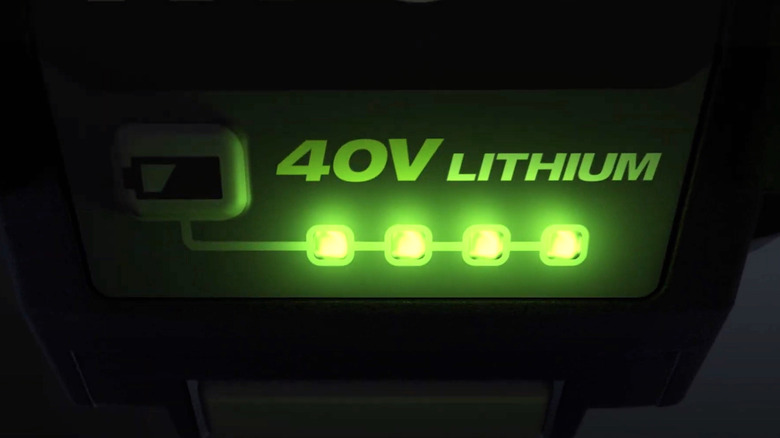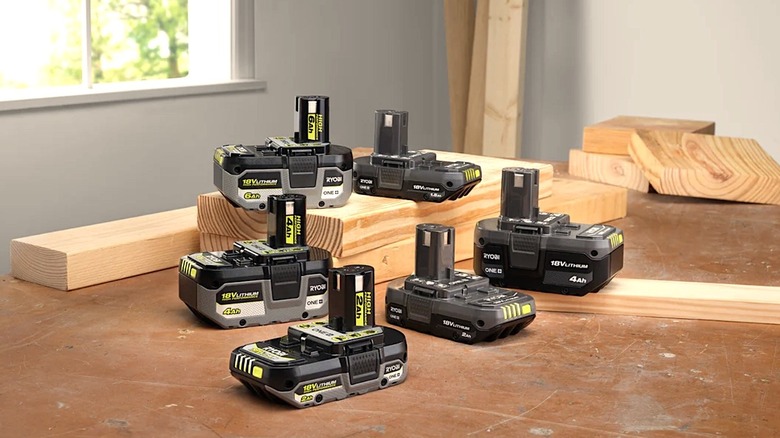What To Do When A Fully-Charged Ryobi Battery Just Won't Work
We may receive a commission on purchases made from links.
With most power tool manufacturers and even certain state governments like California pivoting away from gasoline power in devices utilizing small engines, rechargeable Lithium-ion batteries are fast becoming the preferred replacement. In turn, companies like Ryobi are ramping up production on batteries that boast gas-like power without the gas. And at this point in its history, Ryobi actually makes more electric and battery-powered products than it does devices that run on gas.
But even as preferable as battery power is, particularly with handheld tools, the power sources are not without their problems. For instance, some may not power a device as long as you might need to get a job done. Likewise, Lithium-ion battery packs can take more time to recharge than users would like, leaving them to wait for a full power charge rather than just refueling when the need arises. Perhaps more frustrating than either of those issues is the possibility that a Ryobi battery pack may not work even when it's showing a full charge.
That is, of course, a possibility with any Lithium-ion battery pack, and there are actually quite a few reasons the seeming malfunction might occur. But before you start running down a full checklist to determine the potential source of the problem, there's one thing you should do first, which is to simply disconnect the battery from its device and then reconnect it. This may help ensure that the power source is making a solid connection to the device itself.
Extra steps to take if your charged Ryobi battery isn't working
If your rechargeable Ryobi lithium-ion battery is not making clean, constant contact with the device it's connected to, it may be because the contact pins on either have become excessively dirty. And yes, it's common for dirt and grime to collect on those contact pins when the device is in use. The fix here is simple, as you just need to clean the contact pins by hand, doing so with a clean, dry towel. Per some users, a pencil eraser or even isopropyl alcohol may also help. In extreme cases, a baking soda and water compound may also be necessary.
If the problems persist, try testing the battery in other devices. You might also want to check that the battery pack is producing the correct voltage output. After all, rechargeable lithium-ion battery packs are prone to degrading over time, and that decline can be expedited with frequent usage. You can check the battery's voltage by using a multimeter, which you can purchase through Amazon for about $10 these days.
If you suspect that a degraded or otherwise malfunctioning battery, or even a faulty device is the issue, it's possible that they may qualify for replacement by Ryobi via warranty coverage. You likely considered the warranty among many other factors before purchasing your Ryobi device, but those warranties are limited, and can vary significantly between products. You'll need to consult Ryobi's official warranty page to see if any of your products qualify. Otherwise, you may need to pony up for replacement gear, though you should be wary of doing so via Amazon.

